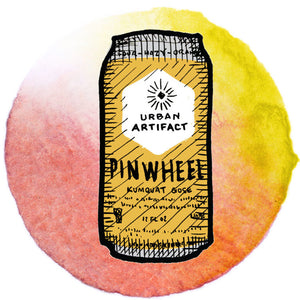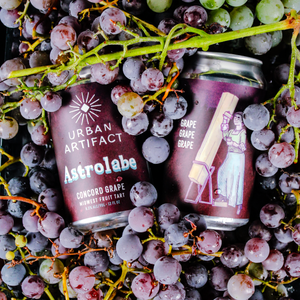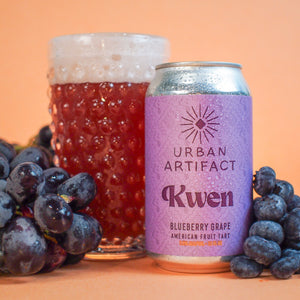A key piece of the Urban Artifact brand is our four primary seasonal goses. The strategy of having a fixed seasonal beer selection was decided at the very beginning by the ownership team. Our goal was to meet the criteria that we are slowly becoming known for: start our intrepid push towards fruit-centric beer, play up our tart-forward acidity, and putting a twist on historical beer styles. So, the result was a fruited gose that varied with the seasons.
The brewing team had a base gose recipe that we actually launched at our opening (some sharp-witted fans may remember Harrow). This – with a few tweaks along the way – is still the base of all of our goses. Bret’s Harrow is not far from a traditional gose – tart, salty with a hint of coriander, bright, and clear. It’s enjoyable alone but lends itself very well to adaptations.
With a heavy eye towards seasonality, sourcing, and flavor variety, we landed on the four goses currently in our portfolio:
- Keypunch – Key Lime Gose
- Chariot – Tart Cherry Gose
- Sliderule – Chocolate Raspberry Gose
- Pinwheel – Kumquat Gose
They roughly coincide with the seasons and are intended to be available for about 2-3 months each year. Keypunch in summer; Chariot in autumn; Sliderule in winter; Pinwheel in spring. The fruits are seasonal both for their interpretations/flavors (the bright kumquat citrus is very spring-like), as well as their availability (fresh tart cherries are much easier to source at the end of summer). Since we use real fruit, we have found interesting ways to both process it and source it as we’ve scaled up production. Many many first batches of Keypunch were completed by manually mandolin-ing tens of thousands of individual key limes prior to boiling them and putting them in the fermenter. Now the team has sourced bulk quantities of fresh key limes pureed and ready. (Some other fruits in our Midwest Fruit Tart series still get hand processed, though.)
We found that with the introduction of the first seasonal, Keypunch, having both Harrow and Keypunch on tap at the same time was trouble. While both are great beers, hardly anyone was drinking the plain version when the fruited option was available. This issue repeated with Chariot. So at the end of 2015, we dropped the idea of having the base beer on draft and focused on the seasonal selections.
The can characters each have their own story, but the goal was always to tie the fruit to the name. Our method of selecting names from historical context both gives a starting point for the illustration and allows for interpretation of how to create a mascot for the style. In all honesty, these characters have been the hardest ones to interpret (of the drawings I’ve done so far). Instead of drawing just the item the beer is named after or the fruit that is inside, the character is a visual representation somewhere outside those two. This process typically involves lots of research into the name, the fruit, and some history… then lots of messy sketches, and a few wrong-directed attempts before settling on a good context to represent.
We’ve expanded the line with variants along the way, and Pickle in summer of 2017 in collaboration with Izzy’s deli chain. Look for more fun stuff as we keep growing.
Cheers,
Scott Hand
Chief of Organization







